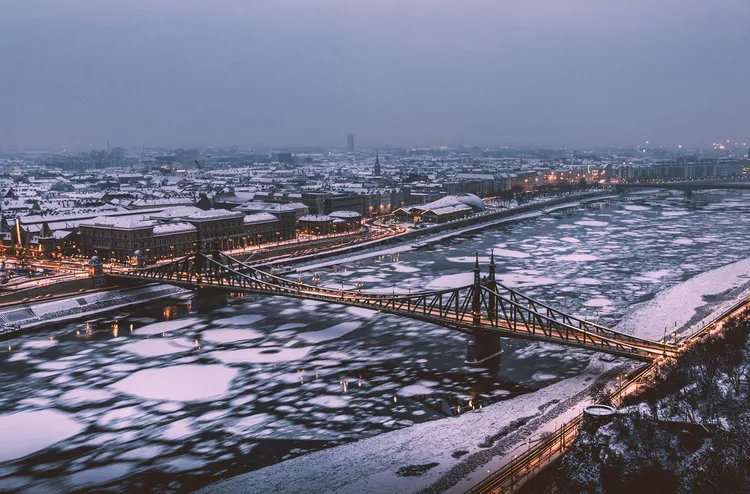Summary
Budapest, Hungary straddles the Danube, with Buda on one side and Pest on the other. These three elements, Buda in the hills, Pest on the plain, and the timeless, storied European river dividing the two, are the essence of the Hungarian capital. Budapest is known for its stunning art nouveau architecture of the turn of the 20th century, thermal baths and spas, remarkable views from the bridges over the Danube, and music that fills the air.
One of the best ways to take in the scene is sitting at a cafe table with a coffee, cocktail, or glass of wine. March weather makes that a bit of a challenge, but if you have packed for the weather, hey, no problem.
Budapest Weather in March
Bad news first: Nighttime temperatures in March stay below 40 degrees Fahrenheit, ranging from 30 to 38 degrees. The good news is that toward the end of March, after spring officially arrives, daytime highs edge close to 60 degrees, with 57 degrees being the average.
March sees a significant warm-up in daytime temperatures, with highs early in the month more than 10 degrees cooler, averaging 47 chilly degrees. Spring might be in the offing, but for most of March, it still feels a lot like winter. Moreover, March is generally a cloudy month in Budapest, so don’t expect a lot of sunshine warmth.
On average, Budapest experiences about 11 days of rain during the month and receives 9 hours of sunlight each day before nightfall.
What to Pack
The weather in Budapest in March may not be delightful, but there are plenty of relaxation and warm experiences to be had in the city. Try soaking in the thermal baths and spas, take an educational tour of the Hungarian Parliament and many museums, enjoy a day trip, or simply settle down in any of the multitude of cafes and pubs.
Staying comfortable is key to enjoying your trip. The trick is to pack pieces that will work together to keep you warm no matter the temperature. Start with a warm leather jacket, peacoat, or knee-length walker coat. (If departing from many U.S. locations at this time of year, you will likely be wearing a warmer coat. If you’re departing from a warmer destination, select the coat that packs the easiest.) Additionally, add a scarf to wrap around your neck with a European-style knot for extra warmth that doesn’t take much space in your bag. This scarf can also be worn with a lightweight jacket or sweater on milder days without a coat.
Your bag should also include usual layering pieces: jeans, medium-weight pullover sweaters, a cardigan sweater, and tops to layer underneath for added warmth.
All these items should be in a neutral palette for maximum versatility. Ankle boots are ideal for March; supportive walking shoes are another good option.
March Holidays and Events
- Budapest Dance Festival: This celebration of all things dance showcases performers and styles from around the globe at various locations across the city. You can catch the last day of this 10-day festival on March 1st.
- Revolution Day: March 15th is a national holiday in Hungary, celebrating the uprising of 1848 with parades and various events. Budapest’s Spring Festival marks the arrival of the season with concerts, performances, and a traditional fair.
- International Macaron Day: Mark March 20th on your calendar to indulge your sweet tooth. This celebration of the delightful dessert originated in Paris but has spread to major cities across Europe. Pastry shops and bakeries are likely to feature specials and deals on the sugary treat.
- Budapest Spring Fair: The annual festival is an appreciation of the arts and culture of Hungary. The city hosts over 200 events that spotlight the best of dance, music, art, and cinema. Performances run for two weeks, kicking off on March 30.
Tips for Travel to Budapest in March
- Finding accommodations for most of the month should not be an issue; however, if you are traveling during or before the start of a festival like the Spring Fair, plan ahead.
- As Revolution Day on March 15 is a national holiday, check in advance if major public attractions have limited hours or are closed before scheduling your activities for the day.
- Look for colorful aspects of Hungary’s culture, such as decorated Easter eggs, Hungarian folk costumes, and Hungarian Easter traditions during the Budapest Spring Festival.





